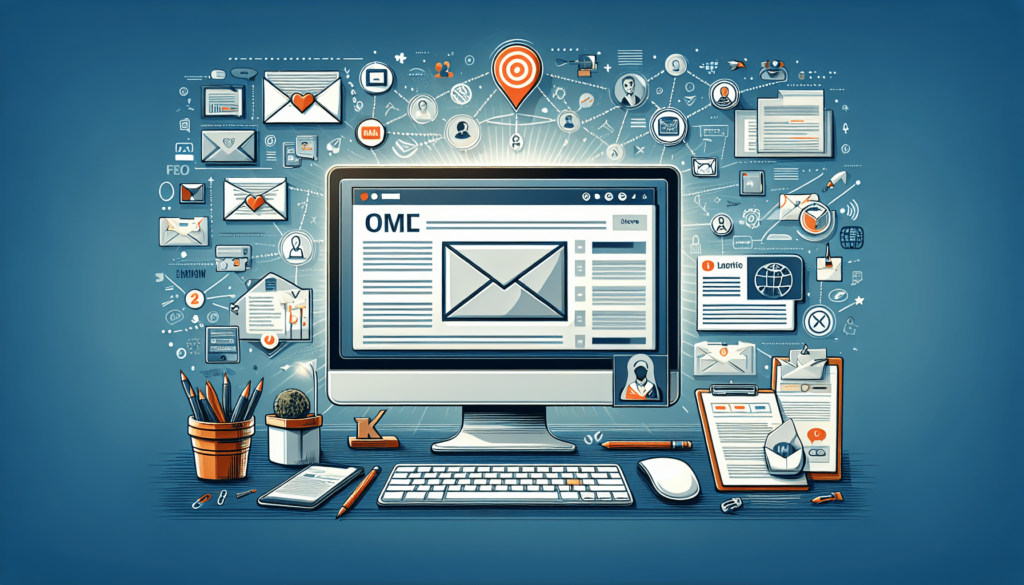Welcome to an insightful article on the importance of email marketing in customer retention. In today’s digital age, maintaining a strong relationship with your customers is crucial for the success of your business. Email marketing plays a vital role in keeping your customers engaged, informed, and loyal to your brand. By delivering personalized messages, exclusive offers, and valuable content directly to their inbox, you can nurture relationships with your customers and keep them coming back for more. Stay tuned to learn more about how email marketing can help you retain your valuable customers and drive long-term success for your business. Have you ever wondered how businesses are able to keep customers coming back for more? The key lies in customer retention strategies, and one powerful tool that businesses use is email marketing. In this article, we will explore the role of email marketing in customer retention and how you can utilize it for your own business. Whether you are a seasoned marketer or just starting out, email marketing can be a game-changer for your customer retention efforts.
Understanding Customer Retention
Customer retention is the act of keeping customers coming back to your business over and over again. It’s not just about getting customers in the door once – it’s about building relationships that keep them coming back for more. Think about your favorite brands – what keeps you coming back to them time and time again? Chances are, they have strong customer retention strategies in place.
Why is Customer Retention Important?
Customer retention is important for several reasons. First and foremost, it’s more cost-effective to retain existing customers than to acquire new ones. Studies have shown that it can cost five times as much to attract a new customer than to keep an existing one. Additionally, existing customers are more likely to make repeat purchases, refer friends and family, and become loyal brand advocates. Building a solid base of loyal customers is key to long-term business success.
The Role of Email Marketing
Now that we understand the importance of customer retention, let’s dive into the role that email marketing plays in this process. Email marketing is a highly effective way to communicate with your customers, build relationships, and keep them engaged with your brand. With the right strategies in place, email marketing can be a powerful tool for increasing customer retention rates.
Benefits of Email Marketing for Customer Retention
- Personalized Communication: Email marketing allows you to personalize your messages based on customer preferences, behaviors, and interactions with your brand. This personalized approach can help build stronger relationships with your customers.
- Automated Campaigns: With email marketing automation tools, you can set up campaigns to send targeted messages at the right time, without having to manually send each email. This saves time and allows you to reach customers with relevant content.
- Segmentation: Email marketing platforms often allow you to segment your email list based on different criteria, such as demographics, purchase history, or engagement levels. This allows you to send more targeted and relevant messages to different groups of customers.

Building an Email Marketing Strategy for Customer Retention
Now that we’ve covered the basics of email marketing and its benefits for customer retention, let’s discuss how to build an effective email marketing strategy for your business. Building a successful email marketing strategy requires thought, planning, and ongoing optimization to ensure that you are effectively engaging with your customers and driving results.
Setting Clear Goals
Before you start sending emails, it’s important to define your goals for your email marketing efforts. Are you looking to increase repeat purchases, drive customer referrals, or build brand loyalty? By setting clear goals, you can tailor your email campaigns to achieve the desired outcomes.
Understanding Your Audience
To create personalized and relevant email campaigns, you need to have a deep understanding of your audience. What are their preferences, behaviors, and pain points? Segmenting your email list based on different criteria can help you send targeted messages that resonate with your customers.
Crafting Compelling Content
The key to a successful email marketing campaign is compelling content that catches the reader’s attention and drives action. Whether you’re promoting a new product, sharing customer testimonials, or offering special discounts, make sure that your content is relevant, valuable, and engaging.
Testing and Optimization
To ensure that your email marketing efforts are successful, it’s important to test different elements of your campaigns, such as subject lines, calls to action, and timing. By analyzing the results and making data-driven decisions, you can optimize your campaigns for better performance.
Best Practices for Email Marketing
To make the most of your email marketing efforts and maximize customer retention, it’s important to follow best practices that have been proven to drive results. By implementing these best practices, you can create engaging and effective email campaigns that keep your customers coming back for more.
Personalization
Personalization is key to building strong relationships with your customers. Use personalization tokens to address customers by name, segment your email list based on different criteria, and tailor your content to their preferences and behaviors.
Mobile Optimization
With the majority of emails now being opened on mobile devices, it’s essential to optimize your email campaigns for mobile responsiveness. Make sure that your emails are easy to read and navigate on smartphones and tablets to ensure a seamless user experience.
Clear Call to Action
Every email you send should have a clear call to action that prompts the reader to take a specific action, whether it’s making a purchase, signing up for a webinar, or following you on social media. Make sure that your call to action is prominent and easily clickable.
A/B Testing
A/B testing involves testing different variations of your emails to see which performs better with your audience. Test different subject lines, email designs, and calls to action to determine what resonates best with your customers and drives the desired outcomes.

Email Marketing Tools for Customer Retention
There are a wide variety of email marketing tools available that can help you streamline your email campaigns, track performance, and optimize for better results. These tools offer a range of features, from email automation to advanced segmentation, to help you create engaging and effective email campaigns.
Mailchimp
Mailchimp is one of the most popular email marketing platforms, offering a user-friendly interface, drag-and-drop email builder, and robust automation features. With Mailchimp, you can create targeted campaigns, track performance, and optimize for better engagement with your customers.
Constant Contact
Constant Contact is another top email marketing platform that offers a range of features to help you create and send professional emails. With Constant Contact, you can easily build email campaigns, segment your audience, and track results to improve your email marketing efforts.
HubSpot
HubSpot is a comprehensive marketing platform that includes email marketing tools, CRM integration, and advanced analytics. With HubSpot, you can create personalized email campaigns, track customer interactions, and analyze performance to drive better results for your business.
Conclusion
In conclusion, email marketing plays a crucial role in customer retention by allowing businesses to communicate with customers, build relationships, and drive engagement. By understanding the benefits of email marketing, building an effective strategy, following best practices, and utilizing email marketing tools, you can create engaging and personalized campaigns that keep your customers coming back for more. Start leveraging the power of email marketing to boost customer retention and drive long-term success for your business.

